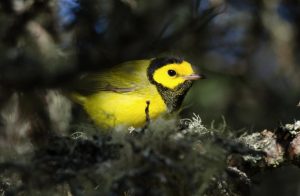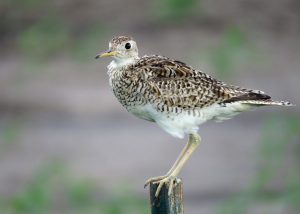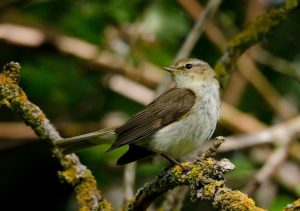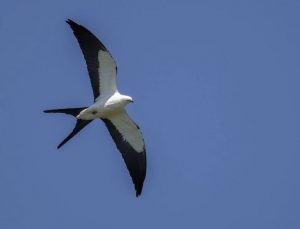News: Uncategorized
The BirdCast team will be reposting two accounts originally written about the August 2017 eclipse. This is the first of these posts, detailing reports of animal behaviors, which we hope will get you excited about observing animal behaviors on 8 April 2024! Read more...
The past week saw another movement above the half a billion mark, with continued high intensity flights predicted for 16-17 October. Let's get those lights out, especially in the areas with red alerts. Read more...
High intensity migration and evolving tropical systems are on deck for this week. We estimate movements 400-500 million birds on each of the coming nights over the continental US. Plus, a very active Atlantic Ocean Basin has a number of tropical systems of the move, entraining and displacing a diversity of birds in the Gulf of Mexico region and Bermuda. Read more...
A major disturbance bringing large temperature drops and snow will move through the northern and central Rockies in the next 48 hours. Local movements of residents and shorter distance migrants are likely as a result, as are concentrations of birds along the frontal boundaries of the cold air mass. Read more...
Birders in northeastern North America should watch for Northern Lapwing, among other European vagrants, as low pressure over the North Atlantic couples with easterly flow associated with the negative phase of the North Atlantic Oscillation and cold, snowy conditions in western Europe. Read more...
A strong low pressure center moving up the Atlantic Coast late during the week of 23 October 2017 produced favorable conditions to transport Neotropical migrants on the move, presumably from the southeastern US, far to the north of their intended destinations. Read more...
Olive-sided Flycatcher is another interesting species on the move that we would like to highlight. With western populations breeding significantly farther south than those in more eastern boreal forests of Canada and the northern tier of the US, the potential to examine patterns of migration progression and differences in migration progression between populations is excellent. Read more...
Upland Sandpipers are on the move (and they have been for a few weeks now). Check out our new map to show the progression of migration for this species! Read more...
Next Friday, BirdCast begins its official Fall 2017 season of weekly migration forecast and analysis reports. Additionally, we will soon be introducing a few new members of Team BirdCast, some new visualizations, and of course discussions of any interesting patterns we see (or hear). Stay tuned! Read more...
In June 2017 numerous observers around the Northeastern US commented that Dickcissels were more obvious, and in greater numbers, than years in recent memory. Team BirdCast take a quick look at this pattern and how it changed (or not!) over the weeks that followed. Read more...
BirdCast will soon return for Fall 2017! Favorable migration conditions for light to moderate flights become more widespread across the West, while the East sees a mix of marginal and locally favorable migration conditions with local light and moderate movements punctuate an otherwise summery pattern. Please check back in the coming week for the first official forecast and analysis posts! Read more...
Team BirdCast is taking a break from forecasting this week to focus on the Global Big Day on May 13. We’ll be back next week! Read more...
Team BirdCast is highlighting an area where fallouts and concentrations may occur over the course of the day. An areas of significant storms and precipitation is moving slowly north and east over the western Gulf Coast, impacting Louisiana and nearshore off the immediate coast. Read more...
Last week, Team BirdCast highlighted at potentially complex scenario for inbound Neotropical migrants in the Gulf of Mexico. Let's get a brief update to see what happened. Read more...
We’ve created a new tool to update us as species advance through their arrivals in each region, using data from eBird. We assign each species to four possible categories: Not Yet Arrived, Arrival Beginning, Approaching Peak, or Peaking. Then, we look for transitions between categories to tell us how each species is progressing through these […] Read more...
Here comes the BirdCast World Edition again! Here, we highlight a species with an extensive global distribution and focus on populations that winter in and migrate through southeast Asia: Barn Swallow! Read more...
Team BirdCast is including a World Edition to bring a more diverse array of forecasts and analyses for this season. In this week's post, we briefly feature four species: Common Cuckoo, Barn Swallow, Eurasian Blackcap, and European Robin. Read more...
Team BirdCast plans to include a more diverse array of forecasts and analyses for this season. You may have already seen some of the new graphics that we started to employ earlier in March. Now, we present another new feature: BirdCast World Edition. Read more...
This spring, we’ll be tracking migration from many angles. New interactive maps made with eBird data will give us a bird’s-eye view of migration in progress. We'll also make use of line graphs showing the percent of eBird checklists reporting species through time. And follow us on Twitter! Read more...
Did Team BirdCast say spring 2017 and it's only February? Are we incorrect in saying this on two conflicting fronts, first because of the record winter warmth in many parts of the US that already seems like spring (or summer!) and second because of the date on the calendar? Well, we may be incorrect because of the date on the calendar, but birds have been on the move for many weeks now. And the warm temperatures in many areas of the country have no doubt played a large role in some of the magnitude of these movements. Here's just a sample of what's on the move in the last week, to whet your appetite for our upcoming weekly migration forecast and analysis features. Read more...























